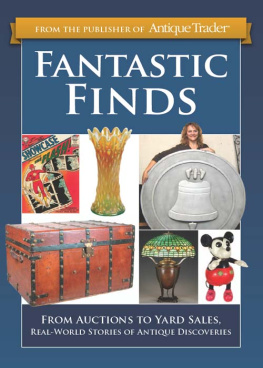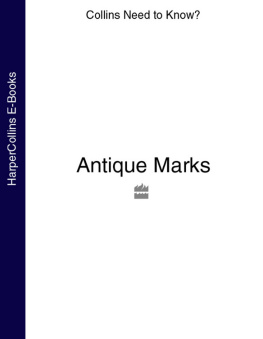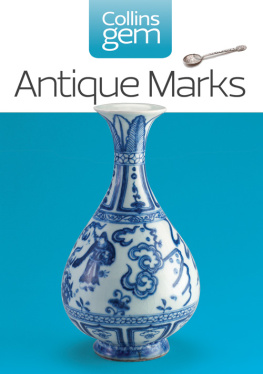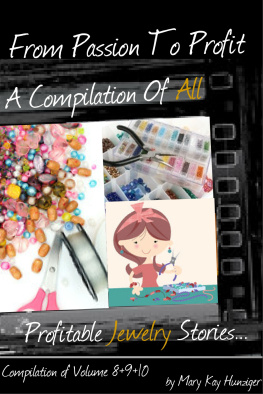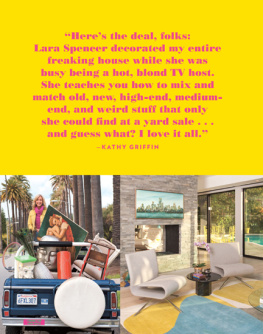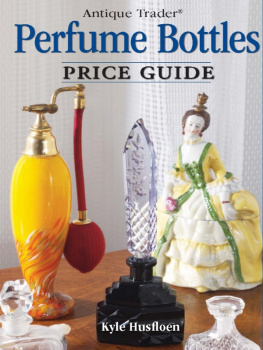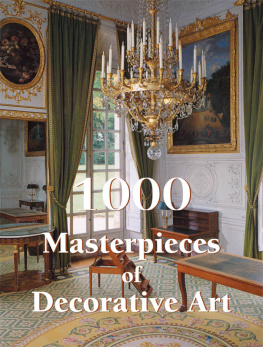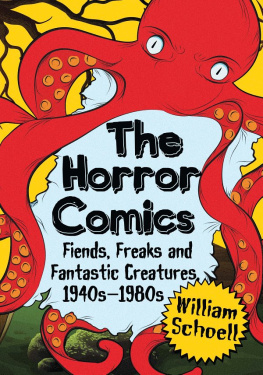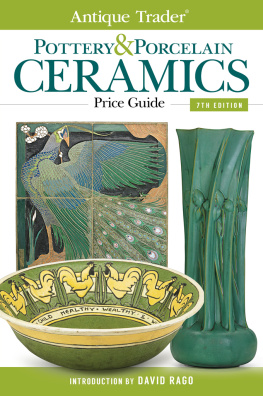INTRODUCTION
Every collector has tales of amazing discoveries, yard-sale surprises, and lifelong hunts that lead to ultimate treasures. These are the stories told on the fields of Brimfield and in the auction galleries before the first gavel falls. In 2009, Antique Trader magazine launched its Favorite Finds contest. We asked our readers to share these memories in hopes they would inspire a new generation of collectors. Three years later, the response is still overwhelming. Readers are sending stories from every corner of the country, sharing their discoveries and greatest finds. One fellow learned his $700 auction gamble was a $38,500 sapphire bracelet. Fan favorites include a junk-shop find worthy of Sothebys, rare garage-sale comic books, and a Navajo rug snagged for $5.
Not all of these finds are valuable in the traditional sense. Then again, value, as an antique collector often defines it, takes many different forms, most of which are personal.
My favorite find is something most people would probably never consider worth keeping, let alone worthy of cherishing. Juxtaposed with my love of Midwest folk art and American art pottery is my fascination with Depression- and World War II-era hats children made from their fathers cast-off fedoras. I first discovered these at a Baltimore antiques show. Resting on a top shelf was an old gray fedora with its brim neatly trimmed in a zigzag pattern. The hat was covered with dozens of celluloid gumball prizes, pinback buttons, Cracker Jack charms, toys and odd bits and pieces a child would have found on his daily adventures. I picked up a few of these beanie hats over the years, but only by chance. I never sought more with any serious effort.
Five years later, I was browsing an online shop by chance when I came across another one of these hats. Covered with key chains and political and novelty pinbacks from Sweet Caporal Cigarettes, this hat retained a scrap of a vintage Boy Scouts of America patch, a Rutgers college button and even a plaque with a patent, a serial number and Chinese characters off of a Victor Talking Machine. I marveled at the variety of objects and thought about the kid who scrounged up all these odds and ends and liked them well enough to ask his mom to sew them on his dads old hat. Maybe he traded other trinkets to assemble his collection. Maybe these items were the only things the boy owned outright. I bookmarked the hats webpage and went back to work.
Whenever my workday got particularly tense, I clicked the link and visited the hat. I dont know why its odd assemblage melted stress away or why this particular item became my virtual happy place. I visited the hat off and on during the course of an entire year. One day it wasnt there! Gone! Had it sold? Who else would want it? Wheres my hat?
I contacted the seller and learned that after an item posted on her website records a certain number of views and does not sell, it is automatically removed. The dealer said she often wondered who was viewing the hat so many times over and over again during the last year but still hadnt purchased it. We shared a laugh that I racked up enough visits to cause the hat to get removed from the site. We worked out a price, and that hat still makes me happy every time I see it.
The stories youll find in this book are like that. They represent the most personal connection between the treasure hunter living inside every collector and the objects we adore no matter their monetary value. We hope you enjoy these tales of the hunt and fateful discoveries and we hope you consider sharing your fantastic find someday. Who knows. Yours may just be the right one to inspire a new generation of treasure hunters.
We welcome more stories. Each submission must include the authors full name, address, and a telephone number or e-mail address. Send your entries to Antique Trader Favorite Finds, 700 E. State St., Iola, WI 54990 or to or fax: 715-445-4087. If sending by e-mail, please include the words Favorite Finds in the subject line of your message.
Many thanks goes to the readers and followers who graciously and generously share their memories every year. Thanks to editors Kris Manty and Susan Sliwicki and designer Sharon Bartsch for their time and talent.
Eric Bradley, Editor of Antique Trader, www.antiquetrader.com
CHAPTER 1
BOOKS
AND
COMICS

ROYCROFT BOOK COLLECTOR
FINDS HISTORICAL RARITIES

I became an avid collector of books published by the Roycrofters, East Aurora, N.Y., in 1978. On a Thursday evening in 1986, a few minutes after I got home from work, the phone rang.
The caller told me his name, and said, Im in New York visiting my son, and I brought along a trunk full of Roycroft books hoping to sell them. But none of the dealers I spoke to were interested. Oneof them suggested that I give you a call. My first thought was that if none of the New York dealers was interested, then why should I be.
However, I was courteous and asked if he could give me an idea of what he had. The first book he mentioned was Ali Baba, a nice book. The second was also good. Then: And this ones called The Bibliomaniac
I froze.
A book by that name had been listed in one of the early Roycroft catalogs, but I knew of no institution or collector who had a copy. Now he really had my attention. He then went on to list a few more titles, all better than average: limited editions, illumined, etc.
I said I was interested, and perhaps we could set up an appointment. We arranged to meet at 9:30 a.m. that Saturday at his sons apartment. I did not sleep well the night before.
Friday evening, I arrived home fully expecting to find a message on my answering machine saying that he had a change of heart and decided to keep the books, or, one of the dealers he had contacted had a change of heart, or well, you collectors out there are familiar with those nervous rushes when youre sure youre going to lose something you desperately covet.
Saturday arrives. After sleeping only lightly, I finally gave up, got up about 5 a.m., fussed around a little, got dressed, hit the road about 7 a. m., and got to his sons building at 8:30.
I waited until 9 and, with the impatience typical of the biblio-mad, rang the bell. He opened the door after what seemed like another eternity, dressed in pajamas and a bathrobe. We climbed up five flights to the apartment.
The place was dark, sparsely furnished, and I had the distinct feeling that there were several people still sleeping somewhere in it. We sat on the floor (yes, floor) next to a large suitcase. He opened it and proceeded to hand me Roycroft books one at a time.
The first was the Ali Baba, an exceptional copy. The next was also a limited edition, in equally fine condition. And next he handed me the Bibliomaniac.
It was a smallish, suede-bound book with a water stain on the cover. I noted immediately that it had a wallet (leather) edge signifying a book of some distinction. The title page was typical and dated March 27, 1908. The following page had a cryptic dedication and then I turned to the next page. I read (to myself) and froze again! Of this edition only two copies were printed of which this is No. One.

